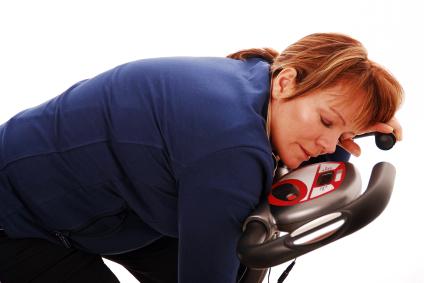
By Veronica Penney
It’s no secret: sitting all day is bad for your health. With consequences to health including muscle degeneration, soft bones, inflexibility in the hips and spine, heart disease, and even increased rates of colon, breast, and endometrial cancers, the oft-touted “sitting is the new smoking” hits close to the truth.
Standing desks are increasingly popular in the workplace, but the jury is out on whether standing desks are really that much better than sitting desks. If the goal is to avoid long periods of immobility, standing may not be helpful, since you’re still not moving, just in a different position. Amidst the differences of opinion, a new contender arises: the kinetic workstation.
“Kinetic workstations” are simply desks that are designed to get people moving. Walking breaks and incorporating calisthenic exercises have been shown to offset some of the effects of long periods of physical inactivity by increasing blood flow and promoting mobility.
Building workstations that promote movement can help workers reap these benefits without leaving their desks. Some kinetic workstations take the form of treadmill desks, or in the case of Greeley company 3D Innovations, cycling desks.
Photo: DeskCycle
The DeskCycle is one of the newest inventions by 3D Innovations. Think of the DeskCycle as a miniature spin bike—it slides under a desk and lets people pedal along while working. It comes with a display stand, which you can place on your desk and use to track speed, time, calories, and distance.
Kinetic workstations are not designed for high-intensity workouts. Rather, the idea is to promote low-intensity movement throughout the day, which counteracts the negative effects of sitting for extended periods of time.
One thing that specialists seem able to agree on is the benefit of continuous, low-intensity activities. Dan Buettner explored Blue Zones, or areas of the world where people live to age 100 at ten times the average rate.
In these areas, community members move continuously throughout the day. In Ikaria, Greece, residents garden, walk to neighbor’s houses, or do yard work regularly. Residents of Okinawa, Japan garden and sit on floor mats, which forces them to sit down and get up several dozen times per day, helping maintain lower body strength and balance.
The DeskCycle follows in this line of thought. It is designed to allow users to cycle without getting distracted from their work. It had 8 resistance settings, allowing users to choose the level that is best for them. 3D Innovations recommends that people start by pedaling for an hour a day at a low resistance level, then slowly increase volume by 15 minutes per day.
Choosing a low resistance setting will keep you from working up a sweat at your desk. However, the DeskCycle can also be used for high intensity workouts. Dialing to a higher resistance setting allows you to use the DeskCycle like a standard bike trainer.
But won’t I hit my knees on the bottom of my desk? Nope. The pedal height on the DeskCycle is 10 inches, which according to 3DInnovations, is the lowest of any pedal exerciser. The DeskCycle also uses magnetic resistance, which is a quieter option than a friction-based resistance design. The idea is that the DeskCycle will remain quiet while in use, allowing coworkers to continue to work without disruption.
For more information on the DeskCycle, check out the 3DInnovations website.


